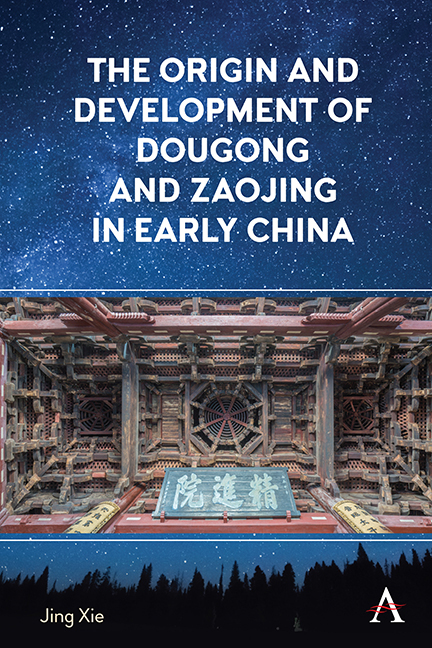Summary
Dougong 斗栱 and zaojing 藻井 are two important architectural elements that were constructed in the great halls of China's royal palaces, major temples, as well as in the underground tombs of social elites. The former consists of dou (block) and gong (arm) that form a structural unit as bracket set. Often in multiple forms known as chonggong 重栱 and placed on the top of columns and beams, dougong plays a critical role in holding the upper structure securely (Figure 1). The latter is a special structure sunken into the ceiling, often profusely decorated with carvings and colorful paintings in various motifs (Figures 2–4). Zaojing is translated variously as “caisson,” “cupola,” and “lantern ceiling.”
The construction of zaojing, quite often, would involve dougong as either structural units or decorative elements. Both of them would appear at the upper proportion of architecture, and they were once the symbols of social status in imperial China. Sumptuary law in the Tang dynasty (618–907), for example, codified that nobles below the royal family members could not adopt the construction treatment of zaojing and chonggong (i.e., dougong in its multiple form) in their houses. Although housing control was loosened in the Song dynasty (960–1279), zaojing and chonggong were still prestigious architectural features that were forbidden in commoners’ houses. In addition, their houses were not allowed to adopt the five-color decoration motif. In the Ming dynasty (1368–1644), sumptuary law for housing seemed to be tightened up, as it stipulated that the court officials’ houses could neither build the double-eave roof and chonggong nor the painted zaojing. The commoner's houses could not apply dougong or colored paintings.
The seamless connection between zaojing and dougong is also reflected in the famous Song construction manual Yingzao fashi 营造法式 (1103), in which zaojing has a particular term douba zaojing 斗八藻井, suggesting a dome-like zaojing supported by eight dougong units. This literary account is perfectly manifested by a relic of zaojing built in 1013 that remains in the great hall of Baoguo Temple, in Ningbo, Zhejiang Province (Figure 5).
As unique and important elements in classical Chinese architecture, dougong and zaojing have been richly studied by scholars from the West and Asia ever since the early twentieth century.
- Type
- Chapter
- Information
- Publisher: Anthem PressPrint publication year: 2023



